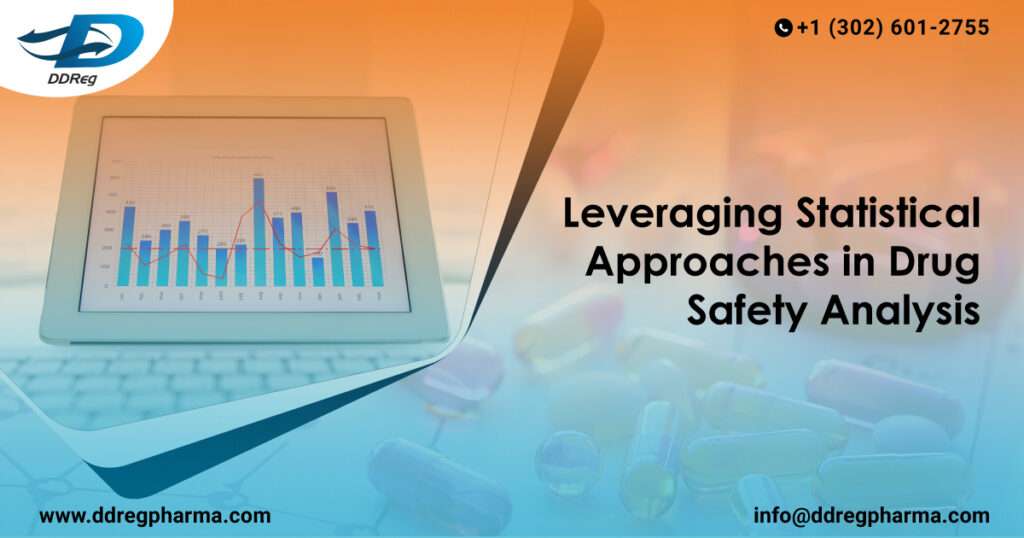Drug safety in clinical trials is ensured through the application of statistical approaches. Adequate planning for safety analyses helps in identifying potential adverse events, evaluating their impact and ensuring that the benefits of a drug are greater than the risks associated with it. It starts from early stages i.e., with the designing of clinical trials whereby sample sizes, randomization procedures, and selection of appropriate endpoints are determined by use of statistical methodologies. Through these considerations, data collected on safety becomes strong enough to be analyzed later.
Planning Safety Analyses
Involvement of various significant factors in planning the safety analyses can be achieved by first determining what constitutes safety endpoints inclusive of both common and rare adverse events. In analyzing time-to-event data and binary outcomes, statistical methods like Kaplan-Meier estimators, Cox proportional hazards models and logistic regression can be used, respectively. The drug’s safety profile across different demographic groups is also explored using subgroup analyses to ensure that it is safe for all targeted populations. When planning a trial carefully, one may utilize data monitoring committees (DMCs) to monitor the progress of the study and suggest changes based on interim safety data. This kind of proactive approach makes early detection possible for any safety signals so that timely interventions can be done or even adjustments on study protocol if need be.
Regulatory Considerations and Best Practices
When presenting safety analyses to regulatory agencies, particularly stringent ones such as the FDA or EMA, it is crucial to adhere to established guidelines and best practices. Safety data used in regulatory submissions must be comprehensive and presented in a well-structured way. This is inclusive of elaborate descriptions of methods employed for analyzing safety, statistical models applied and reasons behind choosing specific endpoints and subgroups. In order to account for any variance from the analysis plan, it should be explained why certain testing procedures were not followed as planned as well as what was done with those changes.
The best methods of presenting safety data include using visual aids like forest plots, Kaplan-Meier curves, and adverse event tables which are used to facilitate understanding of complex data. It is also useful to provide narrative summaries that put the statistical findings in context, emphasizing clinical relevance of the results. Early interaction with regulatory agencies through pre-submission meetings can help align expectations and address potential issues before they emerge during drugs development.
Quantitative Assessment of Adverse Events of Special Interest (AESIs)
Adverse events of special interest (AESIs) are unique safety concerns recognized based on the drug’s mechanism of movement, preclinical findings, or submit-advertising surveillance statistics. Quantitative evaluation of AESIs involves rigorous statistical analyses to assess the incidence, severity, and length of these occasions. Techniques consisting of disproportionality analysis, Bayesian facts mining, and sequential checking out strategies are hired to perceive signals of capability protection troubles.
Characterizing AESIs at some stage in the drug lifecycle calls for ongoing surveillance and the usage of actual-world information to complement scientific trial findings. This non-stop monitoring allows in detecting rare or lengthy-term unfavorable activities that may not were apparent during the initial trials. Advanced methodologies like gadget learning and statistics mining can beautify the detection of AESIs through figuring out styles and associations that traditional methods would possibly leave out.
Shortcomings in Current Safety Outcome Estimation
Despite the advances in statistical methodologies, there are notable shortcomings in the current approaches to estimating safety outcomes. One major limitation is the reliance on clinical trial data, which may not fully represent the real-world population due to stringent inclusion and exclusion criteria. This can lead to underestimation of adverse events that occur more frequently or exclusively in subgroups not adequately represented in trials.
Furthermore, the traditional statistical strategies may not be enough to address the complexity and quantity of facts generated in modern-day drug safety studies. There is a developing need for greater sophisticated analytical techniques that could combine diverse data resources, including digital fitness statistics, patient registries, and social media, to provide a extra complete evaluation of drug safety.
A Call to Action
In order to tackle these problems, the pharmaceutical industry and regulatory agencies are being urged to adopt more innovative and adaptive approaches to drug safety analysis. This includes leveraging big data and advanced analytics, such as artificial intelligence and machine learning, to enhance the detection and characterization of adverse events. To achieve this, stakeholders such as researchers, doctors and advocacy groups for patients collaborate to introduce these novel techniques.
Moreover, the regulatory framework must develop to incorporate real-life observations and modern data analysis methods during drug safety evaluation. Thus, it will necessitate a concerted move towards updating guidelines, training on new methodologies as well as fostering a culture of continuous improvement in safety assessment practices.
Conclusion
Statistical approach to safety analysis is important for the safe use of drugs. The industry needs to adopt this approach, overcome limitations, and use new methods for the benefit of patients and to maintain confidence in medical products.
DDReg brings over 15 years of experience in pharmacovigilance including establishing robust systems to ensure compliant and efficient safety evaluation. Reach out to our experts for end-to-end pharmacovigilance services: Read more from our experts global PV experts: Pharmacovigilance in New Zealand
References and Further Reading:
- Xia, H. A., & Jiang, Q. (2013). Statistical Evaluation of Drug Safety Data. Therapeutic Innovation & Regulatory Science, 48(1), 109–120.
- Lee Ventola, MS (2018) Big Data and Pharmacovigilance: Data Mining for Adverse Drug Events and Interactions, 43(6): 340–351.
- Jen-pei (2007) Liu, Rethinking Statistical Approaches to Evaluating Drug Safety, 48(6): 895–900.

